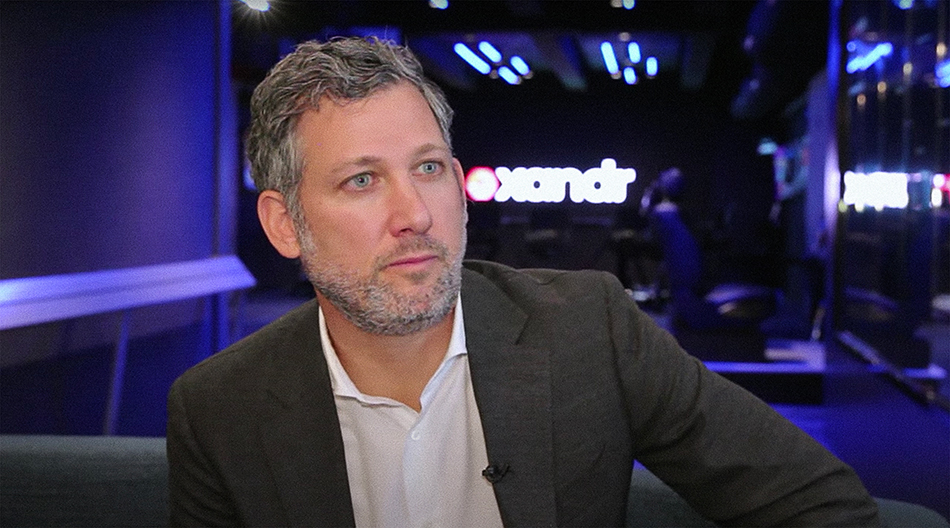Xandr's Media Teams, Absorbed By WarnerMedia, Push Addressable Capabilities
Jason Brown sees demand for combination of content and precision

Xandr, AT&T’s advanced advertising and data unit, went through some changes last year.
CEO Brian Lesser and other senior executives left and its platform assets were split from its media assets and those media assets were merged into AT&T’s WarnerMedia. Xandr and WarnerMedia had already been working together, teaming up during the 2020 upfront, for example.
In an interview, Jason Brown, who had been chief revenue officer for Xandr and is now head of agency planning & strategy, addressable, for WarnerMedia Ad Sales, talks about what clients are looking for in terms of advanced advertising and what WarnerMedia can deliver.
B+C: How is what you’re offering different now that you’re part of WarnerMedia?
Jason Brown: Being part of WarnerMedia, it opens up a plethora of capabilities for our advertisers. Now we go to market with the best of premium content and premium brands and precision tactics. A lot of brands are very excited about this because we’re able to combine both.
B+C: What’s the benefit of having both?
JB: Because both premium content and precision live on top of our subscriber base and we have the exposure data for both upper-funnel awareness and lower-funnel precision campaigns, we’re able to show the impact of both together. And that’s frankly what many advertisers have been asking us for, for years. What is the right allocation of upper-funnel media to lower funnel? What type of creative should I use? Because we have all those assets under one roof, setting one identity, we can show the impact of both together and answer some of those questions.
Broadcasting & Cable Newsletter
The smarter way to stay on top of broadcasting and cable industry. Sign up below
B+C: Is there an example of how that worked for a client?
JB: We have an auto client that previous to our combination was buying a big branding campaign from WarnerMedia and field-event campaign from AT&T addressable. There were two separate buyers, two separate sellers, two separate back-end reports. No narrative together. Now we’re able to work with that particular brand as one entity combining upper funnel, lower funnel and working across a nine-month customer journey.
B+C: So in terms of spending, does one plus one equal more than two?
JB: It depends. But our point of view is that we want to get our customers the answers to their questions and let the data speak for itself, being fully transparent. Sometimes it might showcase that they should be spending more money on upper-funnel activities and less money in precision or vice versa.
B+C: What did the auto client end up doing?
JB: Frankly, they’re investing in both and I think the data shows they should probably start to invest a little bit more upper funnel.
B+C: Are you seeing a change in what clients are asking for now that you’re part of a larger organization?
JB: As it relates to addressable, there’s an expectation that the scope goes beyond the DirecTV footprint and that we extend addressable advertising to not only our streaming services with AT&T TV, but also curated WarnerMedia digital inventory. And so we’re starting to work on bringing that unique capability to our advertisers now that we’re a part of WarnerMedia.
The other thing is WarnerMedia mostly lives with linear TV buyers, who are graded on reach and GRP goals. So one of the new capabilities that has been trending is our ability to bring forward a reach extension product using addressable technology. By looking at linear campaigns and seeing which households and devices were under-served and targeting that cohort we can extend reach while also managing frequency and attaching that to linear campaigns. We just look at it as the second flavor of addressable.
B+C: After COVID-19’s impact on the market last year, is the addressable market growing?
JB: Because of COVID, brands have had to really quickly pivot to new strategies and they need to understand the impact of those new strategies. So they’ve been using addressable to not only reach their current customers or prospects but to understand. Like in the auto category, are customers going to my website, as opposed to the dealership’s? There’s a need for data and precision and attribution even for brands like toothpaste that want to reach people who are staying home.
B+C: So how much is the addressable marketing growing now?
JB: It’s back to double digits.
B+C: Are you able to do addressable advertising on the linear Turner channels, or is that somewhere down the road?
JB: We worked with Adcuratio to test national addressable back in the third quarter and we will continue to test. 2021 is really a testing year as we build that foundation for the future.
B+C: Will HBO Max extend the addressable footprint when the ad-supported erosion gets introduced next quarter?
JB: No comment.
B+C: Everyone’s doing upfront planning. How will your team fit into the larger WarnerMedia approach to the upfront?
JB: Last year, before the integration, we acted as one team to the marketplace, embodying what we felt was the right approach, which was to provide flexibility and trust to our partners. That won’t be different this year.
Jon has been business editor of Broadcasting+Cable since 2010. He focuses on revenue-generating activities, including advertising and distribution, as well as executive intrigue and merger and acquisition activity. Just about any story is fair game, if a dollar sign can make its way into the article. Before B+C, Jon covered the industry for TVWeek, Cable World, Electronic Media, Advertising Age and The New York Post. A native New Yorker, Jon is hiding in plain sight in the suburbs of Chicago.

